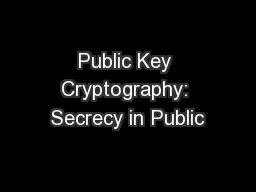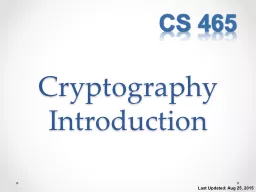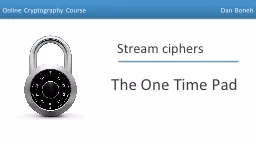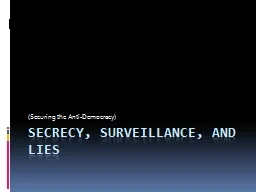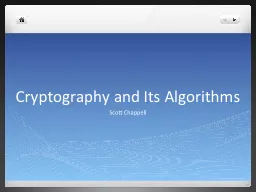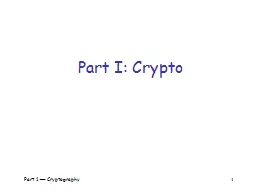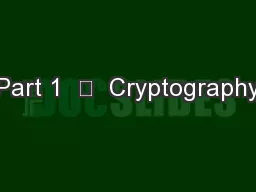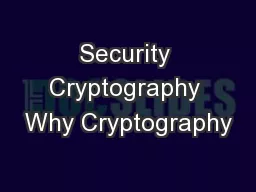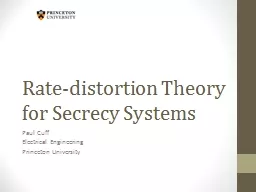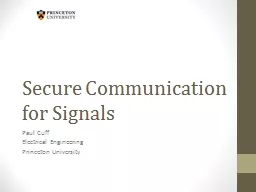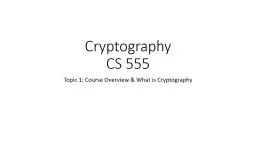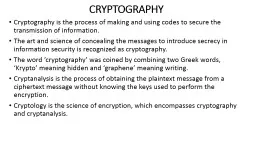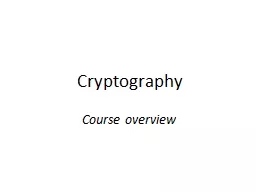PPT-Public Key Cryptography: Secrecy in Public
Author : jane-oiler | Published Date : 2015-11-07
Raymond Flood Gresham Professor of Geometry Overview Key terms and guidelines Caesar ciphers Substitution cipher Polyalphabetic cipher Enigma Modern ciphers Stream
Presentation Embed Code
Download Presentation
Download Presentation The PPT/PDF document "Public Key Cryptography: Secrecy in Publ..." is the property of its rightful owner. Permission is granted to download and print the materials on this website for personal, non-commercial use only, and to display it on your personal computer provided you do not modify the materials and that you retain all copyright notices contained in the materials. By downloading content from our website, you accept the terms of this agreement.
Public Key Cryptography: Secrecy in Public: Transcript
Download Rules Of Document
"Public Key Cryptography: Secrecy in Public"The content belongs to its owner. You may download and print it for personal use, without modification, and keep all copyright notices. By downloading, you agree to these terms.
Related Documents

